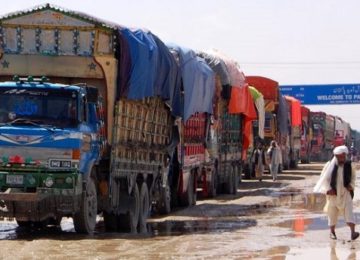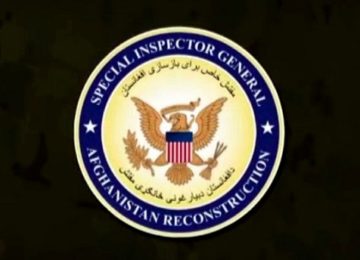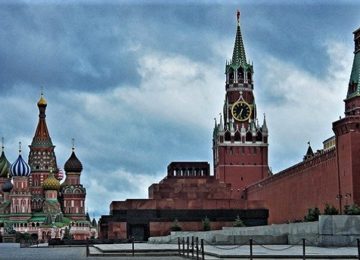December 24, 2018
US President Trump, in a surprising move, ordered the US military on, December 20, 2018, to initiate a road-map to withdraw about half the troops from Afghanistan. The plan, however, could take several months, especially because the President could face serious resistance from Pentagon.
The US currently has about 14,000 troops in the war-torn country, most of which are present as part of a larger NATO-led mission to train, guide and assist the Afghan forces. It is pertinent to note that President Trump has long been critical of the US presence in Afghanistan, which began after the September 11, 2001, terrorist attacks on –the World Trade Center.
Whatever the case and however long this drawdown takes, these recent developments in Afghanistan suggest that the stalemate in the peace process, between the Taliban and the US administration, might finally be witnessing a breakthrough. This is because a full US withdrawal has remained one of the major demands of the Taliban, while negotiating peace with the US representative Zalmay Khalilzad.
However, experts have echoed apprehensions over a hasty exit, which could create a vacuum in the country. In such a situation, many state and non-state actors would seek to fill this vacuum. This can eventually lead to another tug of war between different groups within Afghanistan and across the region.
The decision of US withdrawal came after the Abu Dhabi moot, where a Taliban delegation met officials from Saudi Arabia, Pakistan and the United Arab Emirates (UAE) ahead of their meeting with Zalmay Khalilzad – who was appointed to oversee Washington’s peace effort in September. The crucial peace talks between the United States and Afghan Taliban in UAE on December 17, 2018, were arranged with the help of Pakistan.
Pakistan’s facilitation and efforts were materialized in the backdrop of Donald Trump’s latest endeavor of writing to the Pakistani Prime Minister Imran Khan, asking support for Afghan War’s conclusive solution. These endeavors also suggest that after 17 years, the US has finally come around the idea that only diplomatic efforts could end the war and chaos in Afghanistan.
However, despite US insistence that any peace settlement must be agreed upon amongst Afghans, the Taliban have once again have refused to meet and talk directly with the 12-person delegation, representing the Afghan Government; which they consider an illegitimate, foreign-installed regime. On the other hand, experts are also of the view that strongmen in the US military may not accept Trump’s idea of an early withdrawal and, following its own history, the US Army top brass can stymie any unforeseen Presidential order to abandon Afghanistan.
The Pentagon may reason that its new commander in Afghanistan needs to buy some time to write his own defense assessment of the ground realities. But given the ground realties, one can assume that common sense will prevail for an impulsive president who is famous for taking unpredictable and unusual steps. Afterall, Trump is a businessman and one of his major pre-election promises was based on bringing the “US soldiers home”.
Trump, because of his business background, also thinks in terms of profit and loss, and therefore believes that a high cost of keeping US troops in Afghanistan and the Middle East has brought recession to the US economy. He blames his predecessors, Barack Obama and George W. Bush, for these misadventures, while promising his voters that he will take America out of recession and would create employment opportunities. He believes that only he can bring prosperity to the American working and lower middle class by saving trillions of dollars spent on keeping US troops forces abroad.
Nevertheless, the reduction of US troops in Afghanistan, in a bid to seek closure to the 17-year long conflict, is a welcoming move for confidence building and arresting a political settlement. Moreover, we must also hope that this announcement does not lead to circumstances that former Afghan President Dr. Mohammad Najibullah faced.
Dr. Najib agreed to step down to make way for an interim administration, which included the very people he had been fighting. However, his agreement to step down, way before a deal had been made, led to his downfall and further chaos in the country. Within a few weeks of his announcement, various mujahedeen factions, led by Gulbuddin Hekmatyar, Burhanuddin Rabbani and Mujaddidi, entered Kabul on April 28, 1992. Hence, one public announcement of Najib’s resignation led to conditions that resulted in the fall of Kabul regime.
Therefore, in the current circumstance, the US pull-out strategy needs to be calibrated, which would allow for some forces to stay in the country. This is because the US, after spending 17 years in the country, also bears the responsibility of preventing an implosion of the Kabul government once again.
The author Saddam Hussein is a Research Fellow/Program Officer at Center for Research and Security Studies (CRSS), Islamabad. He graduated as a Development Economist from Quaid-i-Azam University (QAU) and also holds Master of Philosophy degree in Public Policy from Pakistan Institute of Development Economics (PIDE), Islamabad. He tweets @saddampide
© Center for Research and Security Studies (CRSS) and Afghan Studies Center (ASC), Islamabad.








